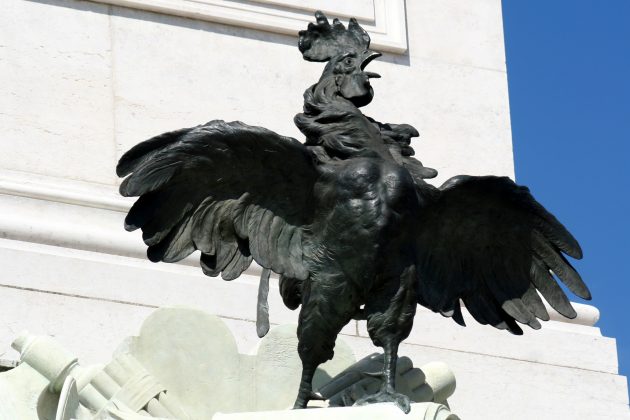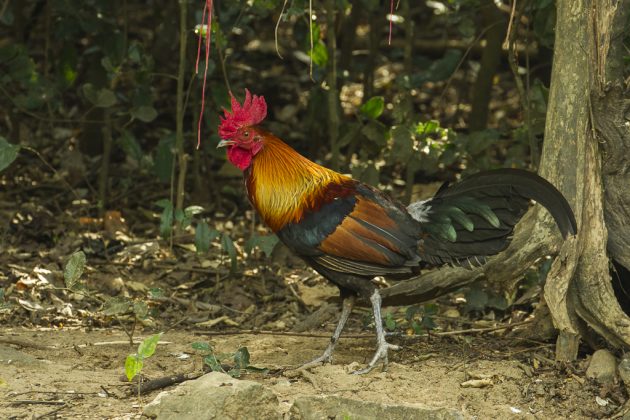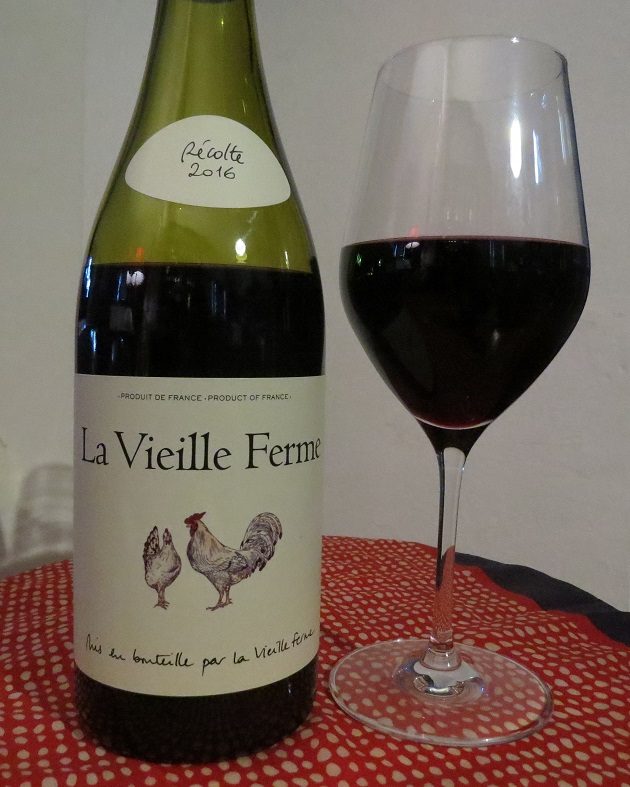I’ve been dragging my feet on wine reviews here at Booze and Birds for quite some time. Not that I haven’t been searching: by now I have a good backlog of bird-bedecked bottles that I’ve picked up over the last few months, just waiting for the right moment to uncork. My hesitation has been informed as much by my bid for occasional sobriety as by a nagging timidity: not only are beers generally made in more modest strengths and packaged manageable amounts than wine, but to be honest, I’m not nearly as well versed in wine as I am in beer – and I know it. I’ve made beer, from grist to glass, but I’ve never even been to a single wine tasting. But I really do enjoy wine and have been meaning to learn more abut it. In his classic Michael Jackson’s Beer Companion, the late, great beer writer Michael Jackson wrote “‘Do you ever drink wine?’ people ask me, as though beer were a prison rather than a playground. A day may pass when I do not drink wine, but never a week.” I could very well say the same and so it’s high time to right this error of omission at Booze and Birds.
In that spirit, if the calendar’s providential alignment of French patriotism and athletic pride this weekend doesn’t provide the perfect opportunity for an inaugural wine review, I have no idea what would: tomorrow is Bastille Day, followed France’s World Cup showdown with Croatia on Sunday. I’m not French, and I don’t follow football, but I generally don’t pass up an opportunity investigate holiday drinking traditions. I suspect I won’t be the only one drinking French wine this weekend.
And that’s not all: I’m even relaxing my unwritten prohibition against featuring domestic fowl. France has more than its share of wild birds to crow about: the flocks of Greater Flamingoes in the wetlands of the Camargue, the famous White Storks of Alsace – even a rare European endemic in the Corsican Nuthatch – besides being the ancestral home of history’s most famous birdwatcher (as well as a famously cruel culinary preparation of songbirds). But is there a bird more emblematic of France than the humble – yet decidedly exotic – farmyard chicken? As a perfect evocation of Gallic rusticity – along with simple bonne femme cuisine and the pleasures of vin de pays – the hen chicken graces the labels of many French wines. And besides, her consort, the tough barnyard cock, is also the unofficial national bird: the Gallic rooster or le coq gaulois.

Introduced, exotic, quite possibly ship-assisted Red Junglefowl can be found all across France.
The Red Junglefowl (Gallus gallus), the principal forerunner of the domestic chicken, must be a resilient bird indeed: swept up from its home in the dark forests of south Asia, the proto-chicken endured and thrived as a vagabond along the oldest trade routes of civilization, before settling into thankless domestic servitude as the most abundant and possibly most widespread bird in the world, with a population numbering some 19 billion. This is a bird deserving much more respect than we generally give it.
Continuing its westward journey, the chicken became known in ancient Egypt as “the bird that gives birth every day”, and was eventually introduced to Europe by the fifth century, B.C., undoubtedly reaching the land that would one day become France by the time of the Roman Empire. The bird’s symbolic association with France began in the Middle Ages, based on Latin wordplay between Gallus (the original inhabitant of France, “the Gaul”) and gallus (“rooster”). While the hen is known for her docility, the rooster’s determined spirit, his boisterous chanteclair announcement of each new day, and – in weathercock form – his constant gauging of the shifting winds surely made him an admirable and valuable member of the agrarian landscape of medieval France. And his role in Biblical scripture – particularly in proclaiming Saint Peter’s denial of Christ – also must have resonated with a deeply Catholic society.
Oddly enough, despite adopting the pugnacious and combative cockerel as a national symbol, France didn’t fare very well when it finally tried to assert colonial control over the homeland range of Gallus gallus, ultimately facing an abrupt eviction from Indochina after the fall of Dien Bien Phu in 1954. A truly literal case of the proverbial chickens coming home to roost, perhaps, but the result was the same. Nevertheless, the onomatopoeic call of the rooster – rendered as “cocorico!” in French – persists as a vocal expression of Gallic patriotism to this day.

Cocorico!
That’s “cock-a-doodle-doo” en français: a Red Junglefowl (Gallus gallus) in its native habitat in southeast Asia.
This week’s showcase for France, its wine, and its domestic fowl is a blended red from La Vieille Ferm (“the old farm”). It’s undoubtedly a familiar wine shop sight to many, distinguished not least of all by its affordable price tag. This frugal selection may seem like an inauspicious choice for our inaugural wine review, but the low cost of this wine belies its pedigree: the entire line of La Vieille Ferm is blended and bottled by the Perrin family of the southern Rhône Valley, best known for producing Château de Beaucastel, a respected and “long-living” Châteauneuf du Pape. La Vieille Ferm Rouge is made from Grenache, Syrah, and Mourvèdre grapes, three of the thirteen traditionally cited varietals used in that more famous appellation.
Instead of the austere heraldry the Perrin family affixes to their bottles of Château de Beaucastel, the two charming chickens at La Vieille Ferm – a white rooster and a hen – denote a wine made for everyday drinking, rather than a vintage that might have been reserved for the papal cellars of medieval Avignon.

La Vieille Ferm is a deep, dark purple red wine with ruby highlights. A gentle swirl releases a noticeable trickle of the wine’s “legs” or “tears” down the sides of the glass, an effect of its 13% by volume alcohol content. The bouquet is strongly ripe and fruity at first, smelling of cherry pie and fresh blackberries, overlaid with notes of cedar, licorice, vanilla, and even an herbal hint of marjoram. Juicy and slightly tart blackcurrant flavors run across the palate, with a modest oak presence and just enough puckering tannins to cut through in the finish. Beyond its affordable price, La Vieille Ferm offers few surprises, but it’s a pleasantly sincere and dependable table wine, suitable as an everyday companion to most meals.
There! I survived my first wine review. I really felt like I was sticking my neck out there for a bit – not always a wise decision in France, either for fowl or royalty!
Good birding and drinking!
La Vieille Ferm Rouge (2016)
![]()
![]()
![]()
![]()
![]()
Three out of five feathers (Good).











Leave a Comment